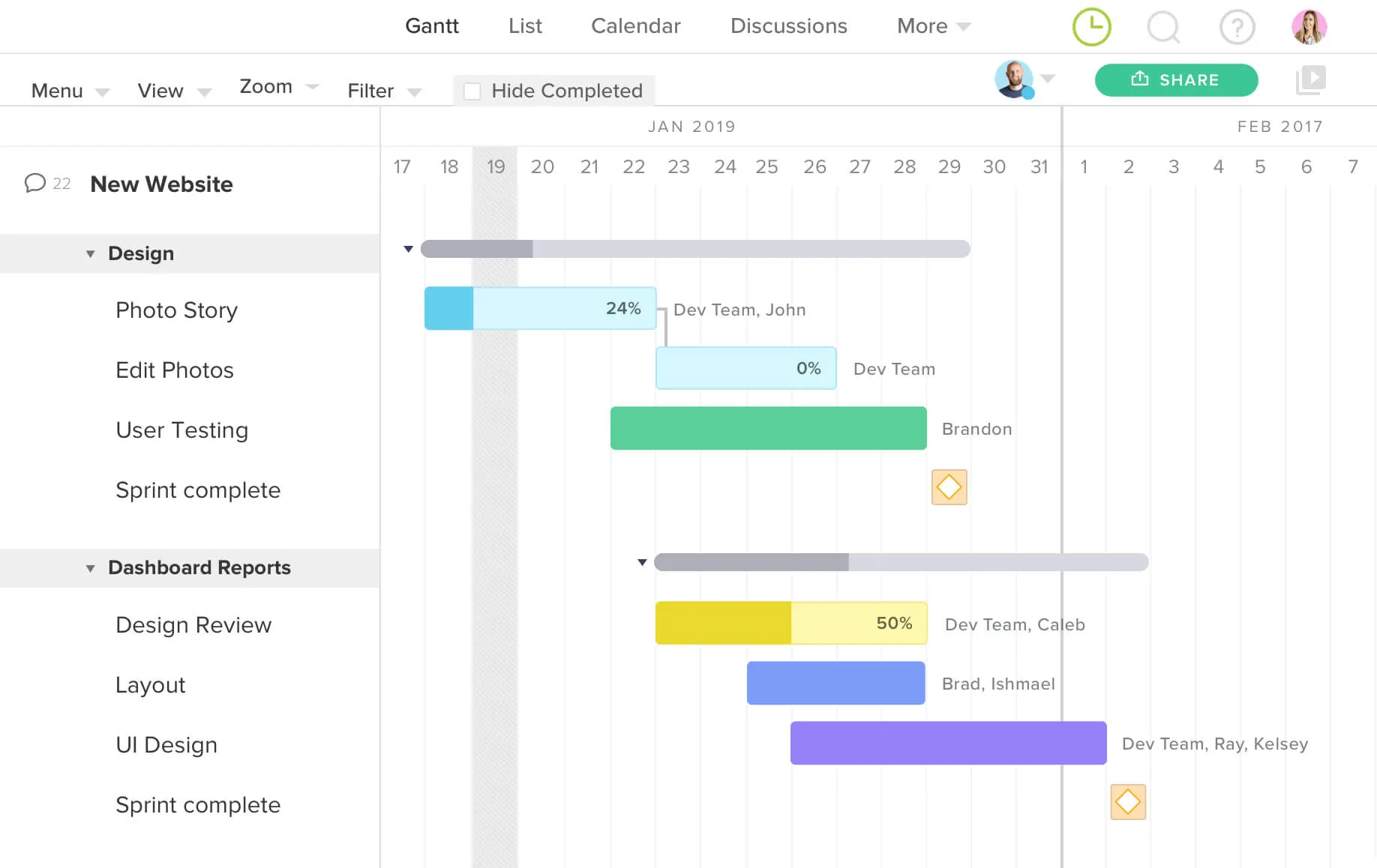
Now, look back at that first paragraph. We set expectations for this article in one sentence!
The point here is that it doesn't have to be difficult. Setting and managing client expectations can be simple and short. It's all about delivery and how you communicate details. Of course, every project is different, and it's not always that easy. But it is an art you can hone and master.
The best time to set client expectations is early and often. As the project manager, you're the connection between your internal team and the client. You have to be detailed and persistent when it comes to communicating and relaying goals and parameters at every phase.
From day one on a project, you need to be clear about what should be expected from you, your team, the process, and the clients. Every person and process detail is key to the project's success, so it's better to lay it all out right there. Loopholes all too often set the stage for scope creep to rear its ugly head.
At the beginning of a project, set up two separate meetings—one with your team and one with your clients—to discuss all of the details and processes that will make or break your project. Some things you might want to discuss in a client pre-kickoff meeting include:
To give your kickoff meetings a little kickstart, consider using our sample meeting agenda below. This will help ensure everyone on the team is aware of all the critical information related to the project.
Easy drag and drop features with templates for faster scheduling. Plan a project in minutes, collaborate easily as a team, and switch to calendar and list views in a single click.
Create your free plan
Large projects can be complex. Tasks often overlap, depend on other tasks to be completed, or are so large in scope multiple team members are involved. If you don't set expectations on who does what and when they do it, staffing can quickly get confusing.
Be sure to assign specific project roles and task responsibilities, while keeping communication flowing. To make assigning project roles easier, use these pointers:
Every project is unique in some way. Sure, there may be shared approaches or deliverables across projects, but discussing how you'll use them on each project is critical for success. Follow the tips outlined in Chapter 3, and you'll start establishing expectations for process, deliverable reviews, stakeholders, and your timeline—all in one fell swoop.
There's no better way to set and manage expectations than simply checking in with your team and your clients. Whether you work solo or on a team of 20, in an office or remotely, sharing progress is one of the best things you can do to keep communication flowing.
In general, a 15-minute in-person (or video chat) review of the day's tasks is a nice way to catch up with your team. Be flexible with your team in determining what's the best approach to conducting your status call.
Once you start, simply take turns and give everyone a chance to talk about what they're working on that day. A quick check-in will force everyone to organize project priorities before the meeting. That little bit of accountability makes a big difference.
Before you wrap up, ask something like, "Does anyone need help? And does anyone have time to help with other tasks if needed?" A simple question like that can help you build trust and rapport with your team—and, of course, it helps you all stay more efficient with your work.
How you approach project status meetings will depend on the project you're working on, team schedules, and maybe even the intensity of the work.
It's good practice to keep an open, consistent line of communication with your clients. Ensure you’re staying current on all project issues by providing a weekly status report via email or phone call, and check in on alignment with project objectives.
Status reports not only help you and your clients stay on track, they also keep you realistic and honest about your work, process, budgets, and other issues. Making time to sit down and discuss these points will pay off in terms of your client relationship and will help your team see the project to completion. With regular status meetings, you're making sure everyone involved reviews and reaffirms the expectations you established at the start of the project.
A good status report covers:
Lastly, don’t forget to have a bit of fun with your status meetings. Use the time to catch up with your team and clients on non-work-related topics.
For project managers, it always comes back to being a good communicator and facilitator. If you’ve done your job, a communication plan lets your team know that over-communication is welcomed—your project will feel open. The team will always know what’s happening, will set their own expectations, and will likely meet timeline and budget expectations without question.
If your clients’ expectations are outlined and discussed, they’ll be happy they’ve helped you meet or exceed them and will feel reassured because they most likely know what to expect from the final product.
Easy drag and drop features with templates for faster scheduling. Plan a project in minutes, collaborate easily as a team, and switch to calendar and list views in a single click.
Create your free plan
TeamGantt Tip: You can track sub-tasks as a team and keep each other in the loop on progress and dependencies with the list view in TeamGantt. With this feature, people who are responsible for getting work done on projects can simply click on the list view and filter down to the tasks they want to see and get a very simple list of tasks to work on. Try it risk and hassle free by building your first project plan for free. We promise there are no strings attached!
Learn how easy project planning can be with TeamGantt. Create your first gantt chart for free!